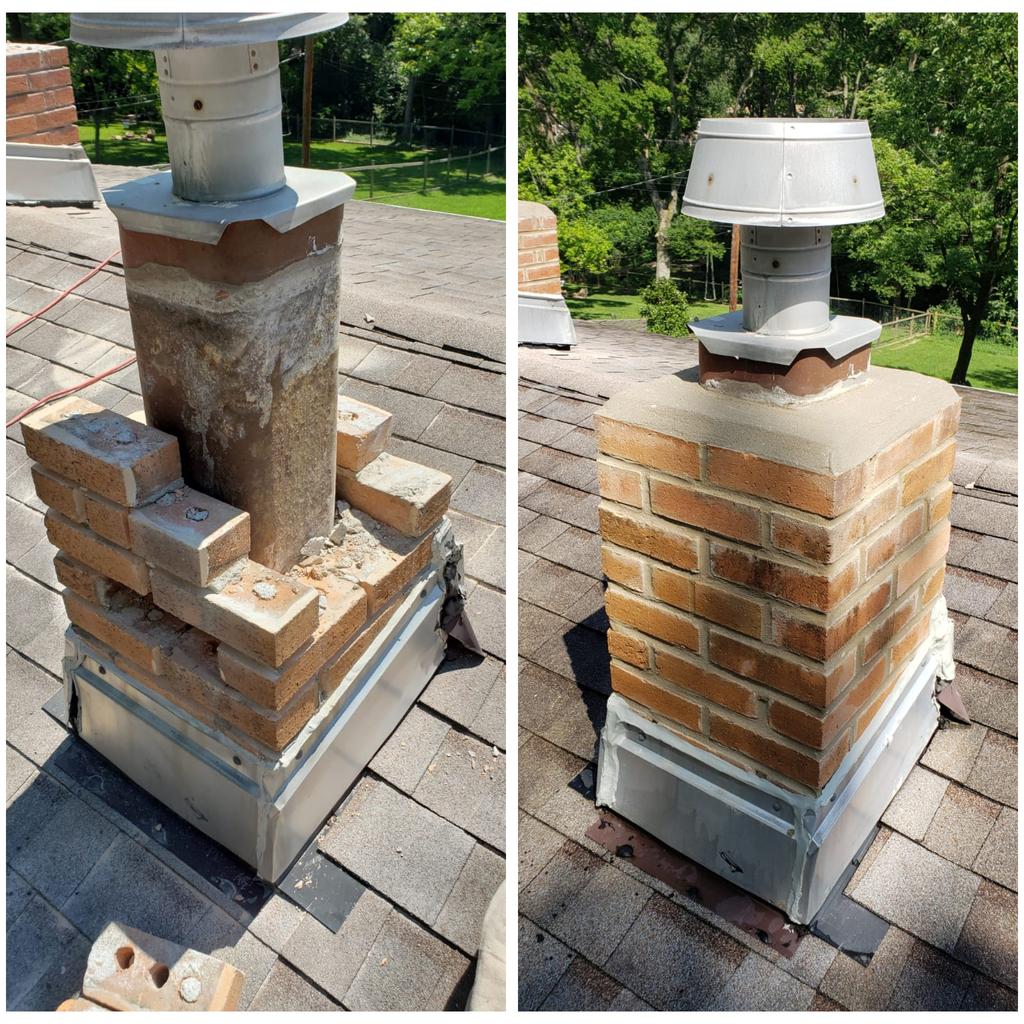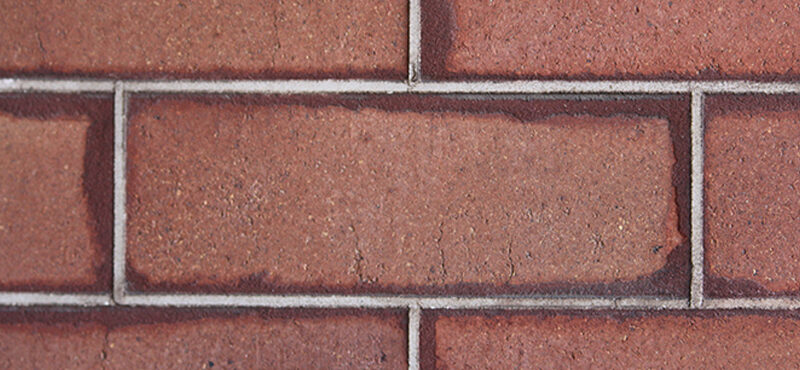Raul's Tuckpointing St. Louis MO: Setting the Criterion for Professional Stonework Fixing
Wiki Article
Improve the Beauty and Sturdiness of Your Brickwork With Tuckpointing
Over time, the mortar that holds those bricks together can wear away, leaving your framework at risk to damage and taking away from its visual allure. Anxiety not, for there is a solution that can recover both the elegance and durability of your brickwork: tuckpointing. In this conversation, we will certainly check out the basics of tuckpointing, its advantages, the difference in between tuckpointing and repointing, the process itself, and the key techniques for keeping and caring for tuckpointed brickwork.The Essentials of Tuckpointing
Tuckpointing is an experienced technique used to fix and boost the look and architectural integrity of brickwork. It entails the procedure of getting rid of shabby mortar joints and replacing them with fresh mortar. The term "tuckpointing" refers to the practice of using two different shades of mortar to develop the impression of fine joints, giving the brickwork an extra polished and visually pleasing appearance.
The initial step in tuckpointing is to meticulously examine the condition of the brickwork. This involves evaluating the mortar joints for signs of damage, such as splitting, falling apart, or missing out on mortar. As soon as the problem locations have been recognized, the old mortar is thoroughly gotten rid of utilizing specialized devices, such as a grinder or sculpt, while making certain that the bricks themselves continue to be undamaged.
After the old mortar has actually been gotten rid of, the next step is to prepare the joints for fresh mortar. This usually entails cleansing out any kind of debris or loosened product and moistening the joints to guarantee appropriate attachment. After that, an experienced tuckpointer uses an aiming trowel to carefully fill up the joints with fresh mortar, ensuring to create a uniform and flush surface area.
Advantages of Tuckpointing
Improving both the durability and look of brickwork, tuckpointing offers a number of remarkable benefits for property owners and residential or commercial property proprietors alike. One of the main benefits of tuckpointing is its capacity to expand the lifespan of brick structures. By replacing deteriorated mortar joints, tuckpointing avoids wetness from leaking right into the brickwork, which can cause architectural damages with time. This helps to maintain the integrity of the brickwork and prolong its total resilience.Another benefit of tuckpointing is its capability to enhance the aesthetic charm of block frameworks. With time, mortar joints can become broken, discolored, or tarnished, diminishing the total appearance of the brickwork. Tuckpointing includes meticulously removing the harmed mortar and changing it with fresh mortar of a contrasting color. This technique permits the creation of tidy, crisp lines that offer the illusion of well-kept brickwork. It can likewise be utilized to create ornamental patterns or styles, even more boosting the visual allure of the structure (Raul's Tuckpointing St. Louis MO).
In addition to improving the longevity and look of brickwork, tuckpointing can additionally raise the value of a building. Well-kept brickwork is seen as a preferable function by possible customers and can dramatically enhance the curb allure of a property. This can lead to a higher marketing cost and a quicker sale when the moment involves place the residential or commercial property on the market.
Tuckpointing Vs. Repointing: What's the Distinction?

To compare tuckpointing and repointing, it is very important to recognize the crucial distinctions between these 2 approaches of brickwork reconstruction. While both strategies aim to preserve the structural honesty and aesthetic allure of brickwork, they differ in their technique and execution.
Tuckpointing is a precise process that entails applying two various colors of mortar to produce the illusion of great joints. This method is primarily used to boost the aesthetic appeal of brickwork by developing the appearance of well-crafted and well-kept joints. The tinted mortar is thoroughly applied and formed to match the shade and profile of the original mortar, giving the impact of accuracy and craftsmanship.
On the other hand, repointing is a much more uncomplicated procedure that involves eliminating tatty or broken mortar from the joints and changing it with fresh mortar. The main goal of repointing is to bring back the architectural stability of the brickwork by making sure correct bonding and securing between the blocks. Unlike tuckpointing, repointing does not include using tinted mortar or the production of an attractive result.
The Refine of Tuckpointing
The application of 2 different colors of mortar to produce the impression of fine joints is a careful procedure called tuckpointing. This strategy entails removing shabby mortar joints and replacing them with new mortar to improve the look and structural integrity of the brickwork. The process of tuckpointing can be separated right into a number of actions.First, the old mortar is very carefully eliminated making use of specialized devices such as mills and blades. It is essential to remove the mortar to an adequate deepness to make certain a solid bond with the new mortar.
Next, the joints are thoroughly cleansed to remove any debris or dirt. This aids to produce a clean surface for the brand-new mortar to comply with.
As soon as the joints are cleaned, a thin layer of brand-new mortar is used to the joint utilizing a small aiming trowel. This first layer, Going Here known as the "punctuating" mortar, is normally the same shade as the existing mortar.
After the initial layer has actually been applied, a second layer of mortar is applied on top of it. This 2nd layer, called the "fillet" mortar, is a different color and is carefully formed to create the impression of a great joint.

Maintaining and Caring for Tuckpointed Brickwork
Once the tuckpointing process is finished, appropriate maintenance and care are necessary to maintain the enhanced appeal and resilience of the brickwork. This maintenance not just makes certain that the tuckpointed areas remain undamaged and useful however also aids to stop any type of possible damages to the general structure.One of the crucial elements of preserving tuckpointed brickwork is normal cleansing. It is important to stay clear of using any type of rough chemicals or rough tools that could potentially damage the mortar or the bricks themselves.
Along with cleansing, it is essential to evaluate the tuckpointed locations regularly. This enables the very early discovery of any signs of deterioration or damages. read this post here Any type of cracks, loosened mortar, or signs of water damage should be addressed promptly to avoid further wear and tear.
Moreover, guaranteeing appropriate water drainage around the brickwork is vital. Water merging or inappropriate drainage can cause moisture infiltration, which can weaken the mortar and trigger structural damages. Clearing up rain gutters and downspouts consistently and ensuring that they are appropriately directed far from the brickwork can help avoid these problems.
Last but not least, it is suggested to speak with a specialist tuckpointing contractor for normal repair and maintenance. Their competence and experience can make certain that any kind of essential fixings are done appropriately, preserving the stability and durability of the tuckpointed brickwork.
Final Thought
To conclude, tuckpointing is a beneficial method for enhancing the beauty and durability of brickwork. It supplies many benefits, such as boosting the architectural integrity of the stonework and protecting against wetness penetration. Tuckpointing entails the removal and substitute of tatty mortar, causing a consistent and clean appearance. By effectively caring and maintaining for tuckpointed brickwork, home owners can guarantee its long life and remain to appreciate its visual charm.
It includes the procedure check over here of eliminating scrubby mortar joints and changing them with fresh mortar. Raul's Tuckpointing St. Louis MO.After the old mortar has actually been gotten rid of, the following step is to prepare the joints for fresh mortar. Tuckpointing entails meticulously getting rid of the damaged mortar and changing it with fresh mortar of a contrasting shade. The colored mortar is meticulously applied and formed to match the color and profile of the original mortar, offering the impact of accuracy and craftsmanship

Report this wiki page